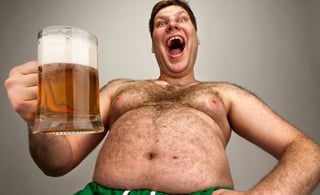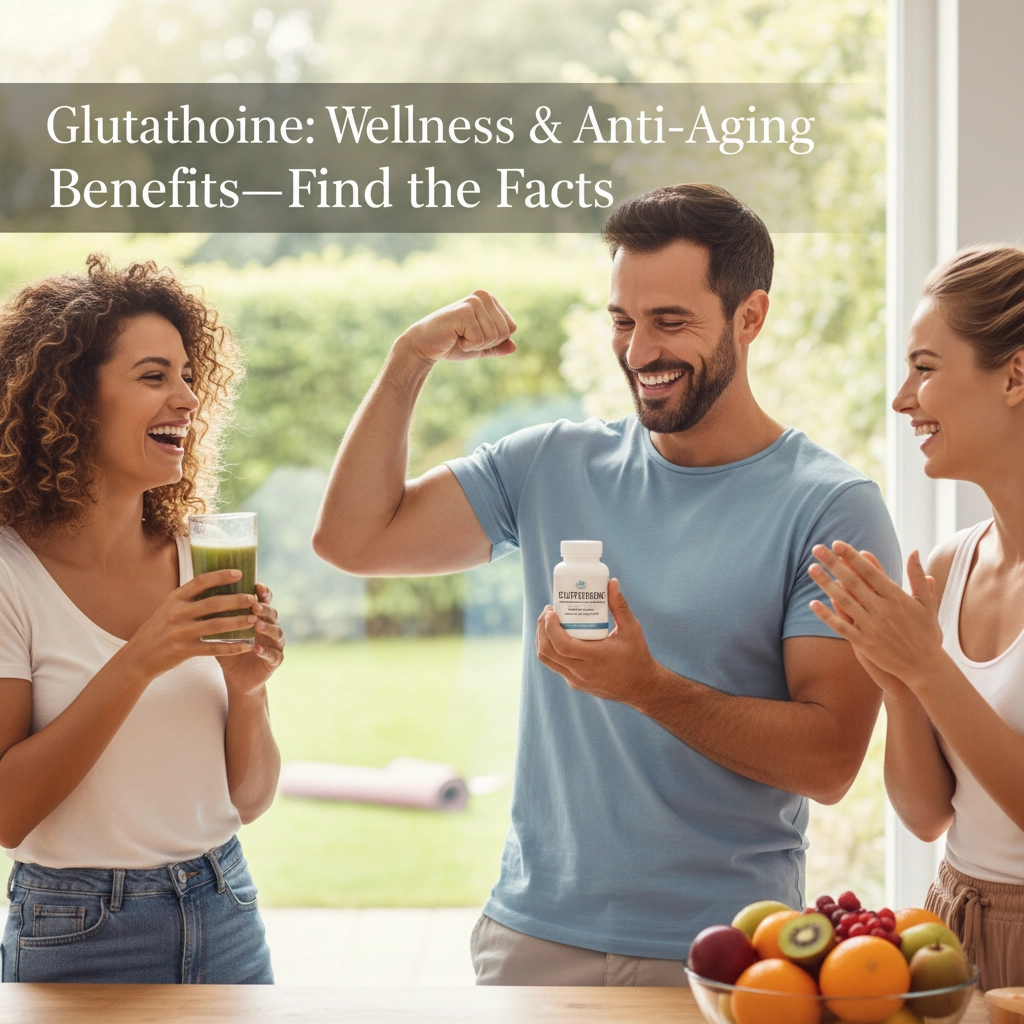We could also ask the same as to what causes diabetes, dementia, arthritis and poor eyesight. Sometimes testosterone decline is the effects of poor lifestyle habits. Other times, it may be environmental or hereditary factors. And in some cases, causes are unknown or have little understanding. Most of the time however, declines in testosterone (T) simply happen due to aging of the body, which sometimes happens prematurely.
 What is hypogonadism?
What is hypogonadism?- What is causing declines in testosterone?
- How to support healthy hormone balance.
- Are YOUR testosterone levels optimal?
Because testosterone plays so many vital roles in helping to maintain general well-being in men, it is imperative to every man’s health both physically and mentally. Produced primarily in the testicles and to a small degree in the adrenal glands, testosterone it is what makes a man, well… a man.
Testosterone plays critical rolls for every man including; sex desire, energy and “daily drive”, cognitive function, muscle mass and therefor indirectly helping to lend a helping hand to regulating blood glucose & fat metabolism, and red blood cell production in addition to much more.
Men with low T levels are more likely to suffer from diseases such as Type 2 Diabetes, Alzheimer’s Disease, and Osteoporosis – much more so than their peers who have healthy testosterone levels.
Hypogonadism, the clinically titled condition in which the body fails to produce adequate levels of testosterone, aka “Low T” or low testosterone, is also associated with many concerns that can lower quality of life. There are two types of hypogonadism:
- Primary. This type of hypogonadism, also known as primary testicular failure or major lack of function, originates from a problem in the testicles. This can stem from injury, aging, drug use (prescription or street) or acquired hereditarily.
- Secondary. This type of hypogonadism diagnosis points the finger towards the culprit hypothalamus or the pituitary gland - parts of the brain that signal the testicles (via LH) to produce testosterone. In this case, these glands are not sending out their signals like they are supposed to and therefore, testicles get no stimulation to perform.
Those struggling with low testosterone display symptoms such as; constant fatigue, lack of sexual interest, low quality of sleep, erectile dysfunction, weight gain, and declining cognitive function. All things that any man aspiring to be successful and happy with a feeling of fulfillment in life does NOT want working against him.
Hypogonadism Is on The Rise
- Hypogonadism affects an estimated 4 to 5 million men in the United States alone, and although it may occur in males at any age, a decline in testosterone is especially common in older men. More than 60% of guys over 65 years of age have free testosterone levels below the normal values of men 30-35 years of age
- Over 5% of men aged 30-79 were reported to have low testosterone in 2007
- 20% of men over the age of 50 in 2007 were estimated to be hypogonadal
- About 30% of men 40-79 were suspected to be testosterone deficient in 2012
Testosterone has grown to become one of the more widely sought after and prescribed medications in the United States, as was reported earlier this decade according to data in 2011. This increase has produced a very large growth of testosterone replacement therapy (TRT) within the pharmaceutical industry. There was an increase from $18 million in the 1980s up to $1.6 billion in 2011 and of course has grown since then.
The reasons for this are many, but can be attributed partly to the continued growth of the population of those over the age of 65 along with more awareness of medical concerns associated with low testosterone, such as metabolic syndrome and cardiovascular disease to name just a couple.
What Is Causing Hypogonadism?
Although there are some predictable factors that experts can associate having low testosterone with, it is still often not completely clear as to what is contributing to the wide spread increase in numbers of men suffering here.
In most cases, it can be assumed that a wide variety of factors together, can be expected to increase a man’s odds of having sub-par levels of testosterone. These would include things such as lifestyle choices, eating habits, environmental toxins, non-hereditary diseases, hereditary traits and body composition.
LIFESTYLE FACTORS
 Opposite of what many think, testosterone doesn’t always just decline with age. In many cases, it declines with and as, one’s health does. An unhealthy drop in testosterone is common in men who:
Opposite of what many think, testosterone doesn’t always just decline with age. In many cases, it declines with and as, one’s health does. An unhealthy drop in testosterone is common in men who:
- Become overweight
- Eat poorly
- Are depressed
- Carry a high level of stress, often
- Have irregular & poor sleeping habits
- Do not engage in regular exercise
DISEASE
Diseases that can contribute to hypogonadism include:
- Diabetes
- Alcoholism
- Obesity
- Pituitary disorders
- Liver disease
- HIV
- Hemochromatosis
- Sickle cell disease
- Anorexia
ENVIRONMENTAL FACTORS
Common, every day toxins in cosmetic products used in the home and work place settings. This, in addition to food & water consumed today and with excessive consumption & exposure of toxins found within, are known to be endocrine (hormone) system disruptors. Many of these are listed here below:
- Fungicides, Insecticides and Pesticides.
- Chlorpyrifos is a known Endocrine Disrupting Chemical (EDC), and one of the most commonly found environmental toxins in the developed world. It has been shown in numerous clinical studies to reduce testosterone levels in men, and was therefore recently banned for residential use by the EPA. It is still legal and commonly used in agriculture worldwide, though. In 1999 alone, 19 million pounds of tick-and-flea pet powders, lawn treatments, and insecticides were distributed throughout the country. Today, chlorpyrifos is found in the urine of a shocking 90% of American men.
- Heavy metals.
- BHS: A common food preservative in processed foods. Simply don’t overconsume processed foods to minimize this here.
- Parabens: Many OTC skin lotions and cosmetics contain parabens and other ingredients that are known as xenoestrogens, which act as “weak estrogens” in the body & may therefor disrupt testosterone and hormone balance. Choose natural products when possible.
- Sunscreen can contain benzophenone-3, homosalate, 4-methyl-benzylidene camphor, octalmethoxycinnamate. Look for zinc oxide & natural based sunscreens here.
- Phthalates: Many perfumes, deodorizers, air fresheners have artificial scents and contain these. Also, commonly found in baby lotions and powders. Opting for natural based deodorants or essential oils can be nice alternatives. One study recently linked high phthalate exposure to a 24-34% drop in testosterone amongst young boys. Phthalates are also found in 10% of US streams. If you live in a developed nation today, it is damn near impossible to escape them.
- Most perfumes are petrochemically based.
- Bisphenol A: a breakdown of polycarbonate, this is used in many plastic bottles. It’s found in the lining of many food cans and juice containers. Avoid heated or heating plastics, plastic lined items and Styrofoam (microwave, oven, sun), as the polycarbonate escapes.
With all this mentioned above, we should keep in mind that we are typically a product and reflection of what we expose ourselves to, a majority of the time. There is no need to go into hypochondriac mode and be a worry wort about every little thing that you encounter, especially if it is just on occasion.
However, if after an evaluation of your daily exposures and consumptions you conclude that you are in fact, exposing yourself to a large amount of endocrine disruptors mentioned above on a very regular basis, it may be wise to implement some changes for the better.
Stay Healthy & Support Endocrine Balance
Consider the following below on a regular basis to support your hormone optimization program:
- Be sexually active
- Practice meditation and keep stress to a minimum
- Get sufficient amounts of Vitamin D
- Avoid food that spike your blood sugar
- Get plenty of antioxidants by eating “the rainbow” of colorful foods
- Get sufficient intake of Zinc
- Schedule & ensure a good night’s sleep
- Be consistent with a regular exercise program
Also, Minimize Endocrine Disrupting Chemicals by…
- Eating organic where it most makes sense
- Stopping pesticide use in your home, yard, or on your pet
- Not heating (microwave or dishwasher) & then eating, food stored in plastic containers
- Greatly minimize plastic dishware, cutlery, and water bottles
- Not heating plastics in microwave or dishwasher
Are Your Testosterone Levels Optimal?
 To achieve and maintain hormone balance as you age, it’s key to understand your place on the spectrum. “Normal” testosterone levels fall in the very large range between 348-1198 pg/ml. Why such a big gap you may ask? Well, it is “normal” for a 22-year-old man to have levels of 1100 while the same goes true for a 72-year-old man to have levels of 400. But, is it normal for a 42-year-old man to have levels of 400?
To achieve and maintain hormone balance as you age, it’s key to understand your place on the spectrum. “Normal” testosterone levels fall in the very large range between 348-1198 pg/ml. Why such a big gap you may ask? Well, it is “normal” for a 22-year-old man to have levels of 1100 while the same goes true for a 72-year-old man to have levels of 400. But, is it normal for a 42-year-old man to have levels of 400?
Considering the ill consequences that come with old age, lower testosterone and its accompanied ailments, most 40 something year old men surely don’t feel “normal” when they only possess the testosterone levels of a man 30+ years older than them. Of course, this is not exactly what any smart, successful and happy man wants.
Address and Optimize Your Testosterone & Endocrine System
If you suspect that your testosterone is not quite what it should or could be, and you want to maximize your health both mentally and physically by ensuring your hormones are optimized and in harmony within, YOUTH-RX is here to assist you to get moving in the right direction.
If you’re an existing client and feel this may be a missing link to helping you lose unwanted body fat and improve your body composition and health, simply contact us and let us know of your interest and we can see if you qualify and then get you a quote based off current blood work.
New inquiring & future clients, please submit the on-line form:
After you take a few minutes to fill out the form above via the online link, you can then schedule some time to talk with one of our expert consultants to answer additional questions you may have regarding our programs and processes.
YOUTH-RX looks forward to helping you look and feel your best!
-Roger Bowman
Sited References:
- https://www.ncbi.nlm.nih.gov/pmc/articles/PMC2948422/
- http://www.mayoclinic.org/diseases-conditions/male-hypogonadism/symptoms-causes/dxc-20248457
- http://www.bumc.bu.edu/sexualmedicine/publications/prevalence-diagnosis-and-treatment-of-hypogonadism-in-primary-care-practice/
- http://www.balancedconcepts.net/tips_avoid_xenoestrogens.pdf
- https://www.niehs.nih.gov/health/topics/agents/endocrine/index.cfm
- https://www.ncbi.nlm.nih.gov/pmc/articles/PMC2330088/
- Global trends in testosterone prescribing, 2000-2011: expanding the spectrum of prescription drug misuse.
Handelsman DJ
Med J Aust. 2013 Oct 21; 199(8):548-51.
- Review The dark side of testosterone deficiency: III. Cardiovascular disease.
Traish AM, Saad F, Feeley RJ, Guay A
J Androl. 2009 Sep-Oct; 30(5):477-94.




